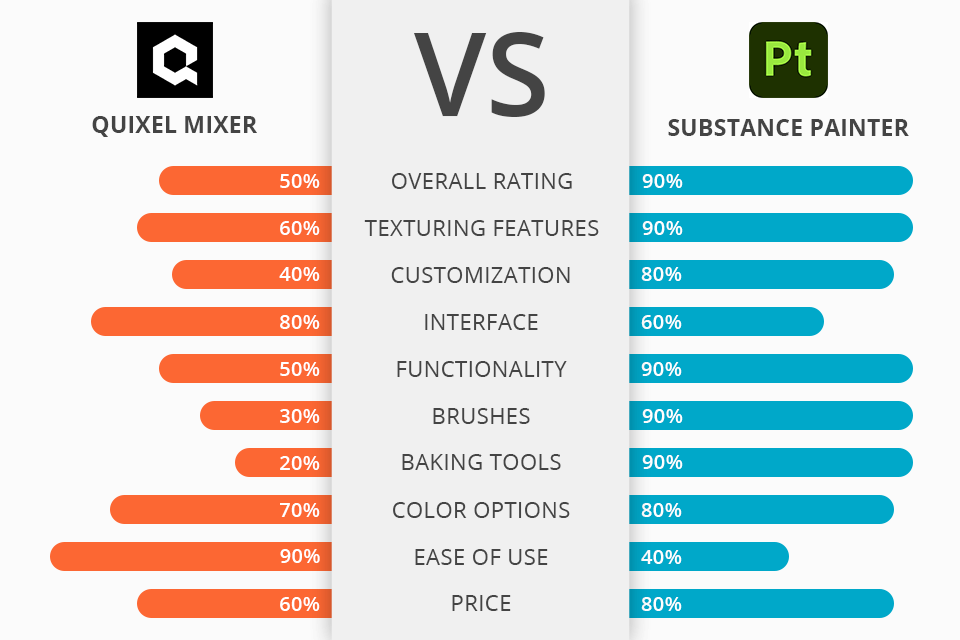
If you are new to texturing software, selecting the right one among popular options like Quixel Mixer or Substance Painter can be quite perplexing. What sets texturing 3D modeling software apart from simple drawing directly on the model is its capability to utilize procedural effects based on the mesh’s shape processed.
The concept of texturing an object without relying solely on manual painting is referred to as Procedural Texturing, and it serves as a fundamental aspect of modern texturing workflows.
Adobe Substance Painter stands as the industry standard, offering a comprehensive texturing feature set that encompasses an extensive collection of Smart Materials. It is deep enough to yield impressive outcomes in both photorealistic and stylized renderings.
On the other hand, Quixel Mixer serves as user-friendly software for texturing and material creation, originally designed to facilitate material blending. It proves to be newbie-friendly allowing significant model transformation, while also offering enough depth for extensive usage by seasoned artists.
Substance Painter is a frontrunner in this Quixel Mixer vs Substance Painter comparison, delivering a range of professional features and tools that are sought after by seasoned artists and designers. Notably, it seamlessly integrates with other Adobe software, expanding its functionality and enabling users to achieve more precise and photorealistic outcomes.
Substance Painter is the winner >
Substance Pinter offers:
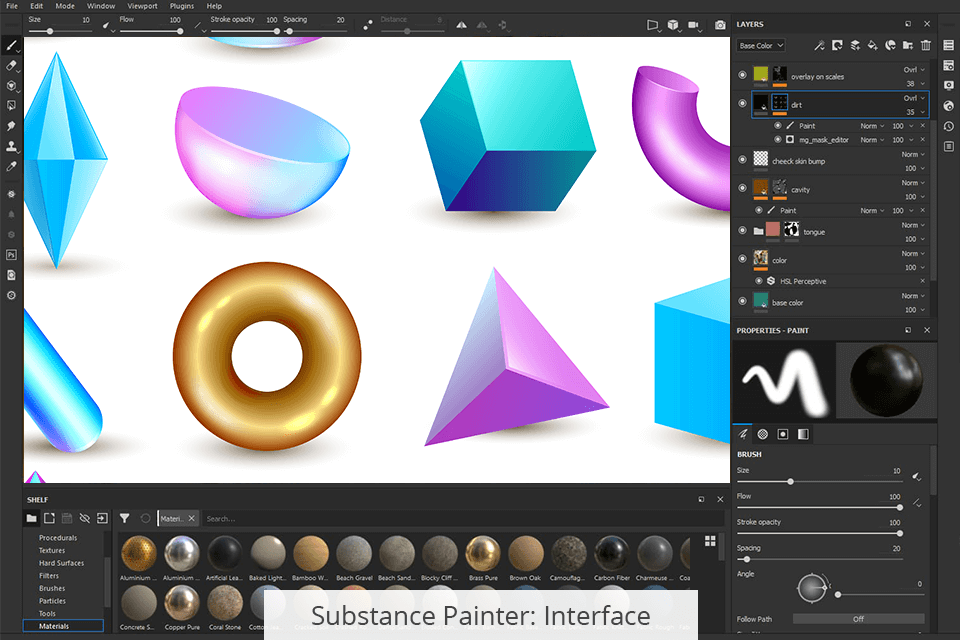
Substance Painter presents a flexible workspace available to customize. By providing a low-res mesh for the scene and a high-res mesh for extracting intricate details, users can seamlessly accomplish their tasks.
Hiding unnecessary tools, tailoring the interface to specific requirements, is also available. It allows for grouping and organizing tools according to your needs. Moreover, comprehensive video tutorials are available on the website to assist those who are new to Adobe’s products.

The workflow in Painter follows a simple and clear approach. By supplying a low-res mesh for the scene and a high-res mesh for detail extraction, users can achieve impressive results.
With just 3 clicks Substance Painter effectively bakes the details into a series of maps, capturing the essence of the original, which its competitor lacks. As a result, the low-poly mesh significantly improves, as ambient occlusion adds shadows to occluded areas, while the normal map realistically simulates lighting effects on bumps and crevices.
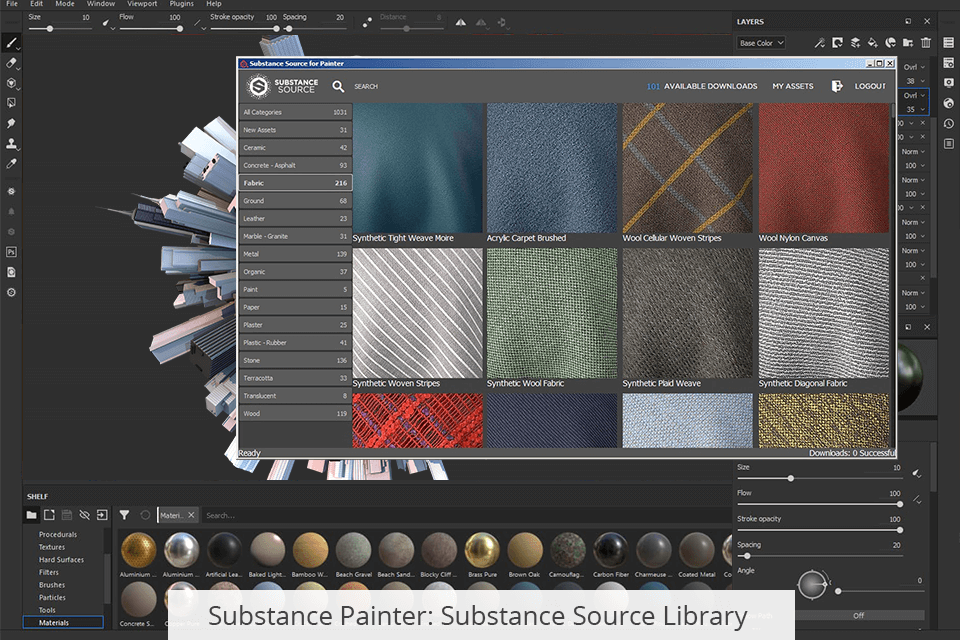
Adobe offers an extensive collection of assets and textures known as Substance Source. This resource enables users to make various effects, faithfully replicating real-world material behaviors such as sheen, anisotropy, clear-coat, and subsurface scattering.
Through simple clicks and drags, one can apply metallic or leather-like appearances to the mesh. Procedural masks allow for further modifications, including selective color alterations and displacement effects to create the illusion of wear and tear.
Frequently, users combine multiple effects to create smart materials, which adapt dynamically to the applied mesh using the baked maps.
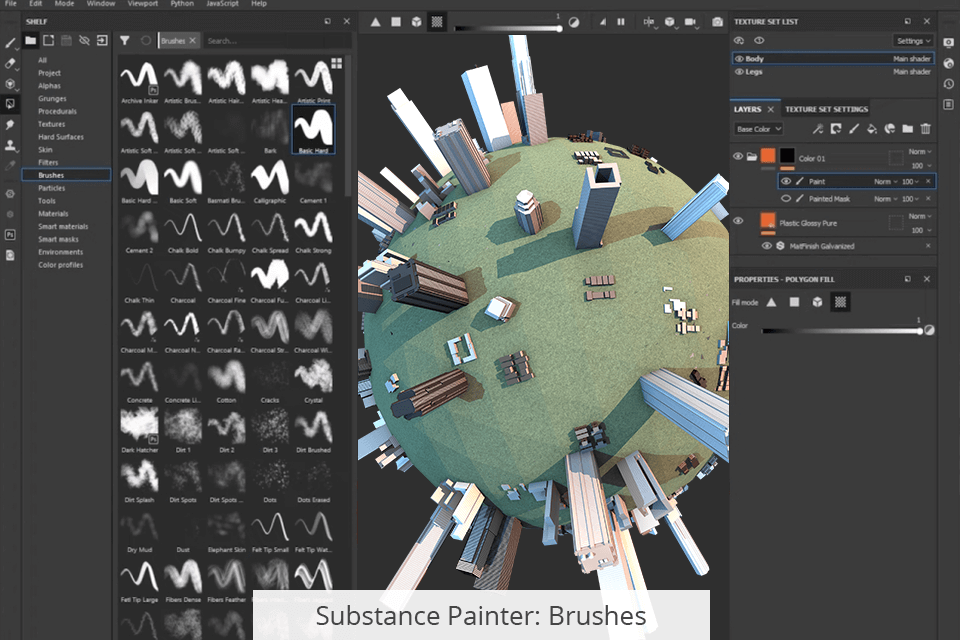
Brushes play a pivotal role in Adobe Substance Painter, and the developers have dedicated significant effort to enhance their efficiency, which cannot be said about its rival in Quixel Mixer vs Substance Painter battle. In comparison to Photoshop, the brushes of this 3D painting software offer a more extensive range of customization options.
Users can adjust the stroke’s size, flow, and transparency, while spacing can be precisely controlled. Each brush is followed by a preview, enabling users to visualize its behavior with the selected material.
Additional brush settings include angle adjustments, the option to enable or disable the “follow the path” feature, the ability to modify Jitter size and flow, alignment, and Backface Culling, among other parameters.

Quixel Mixer boasts an exceptionally user-friendly interface where all the information is displayed on the screen, making it a perfect 3D modeling software for beginners.
Users can effortlessly view and manipulate clearly labeled tools, thanks to its intuitive design. With a negligible learning curve, you can achieve impressive blends within minutes or intricately texture advanced assets with remarkable precision. Whether you’re pressed for time or seeking a deep dive into your creative process, Mixer offers a comprehensive solution.

Similar to its opponent in Quixel Mixer vs Substance Painter comparison, Mixer employs a process where materials are blended using a combination of procedural effects and hand-painted masks.
For those feeling artistically inclined, there’s even an option to directly draw on the mesh. However, it is worth noting that Mixer lacks a baker, which is considered a crucial feature in texturing software.
Nonetheless, with the inclusion of Unreal Engine, Megascans, Bridge, and Blender, Mixer fills the gap in your creative toolkit, paving the way for a new generation of community-centered creative instruments that are offered free of charge.
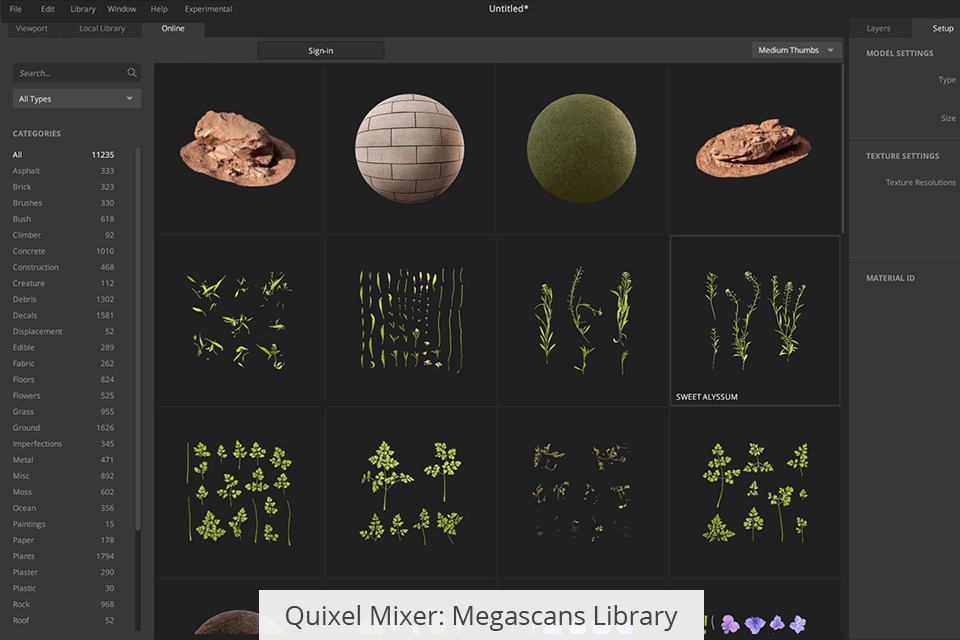
Mixer’s collection of free Smart Materials integrates seamlessly with your 3D assets, offering realistic material definition, dirt accumulation, and weathering effects.
The secret lies in the combination of real-time dynamic baking and customizable procedural masking, coupled with the incredible power of the Megascans collection. Utilizing Megascans ensures access to photorealistic base textures that can seamlessly turn into stunning stylized assets.
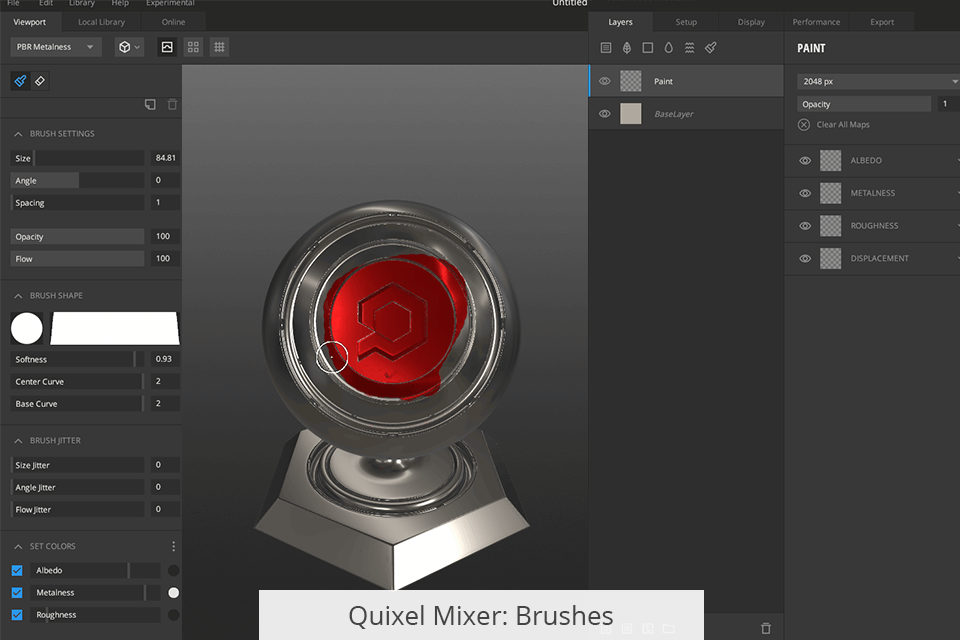
When working with Mixer, it becomes apparent that the available brush selection is somewhat limited. To be more precise, the available brushes are rather basic and may not suffice for serious texture painting, unlike its rival.
When you explore the integrated Megascans Library, you’ll encounter plenty of diverse assets and brushes, all of which require credits for acquisition.
However, an advantage of Mixer is the ability to import your own brushes with ease. Since Quixel Mixer utilizes greyscale images as brushes, you can promptly create and import your custom brushes at no cost. Alternatively, you can explore brushes from other apps or discover a vast array of free brush patterns available online, instantly expanding your brush library.


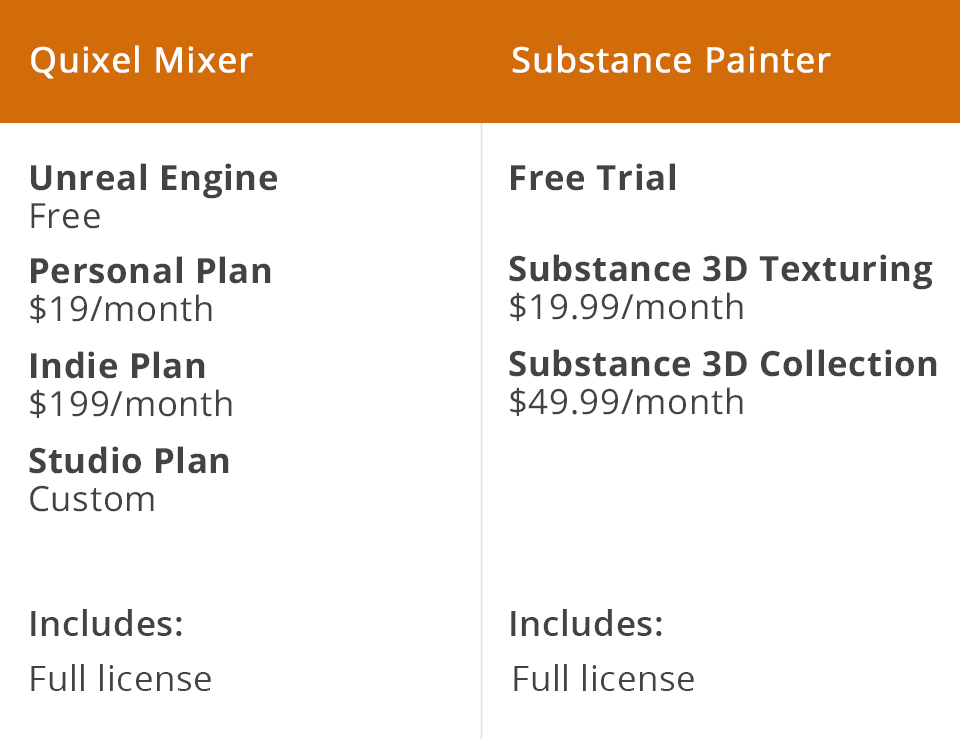
During the 30-day trial period, you can utilize Substance Painter for free. Once the trial period expires, you must choose one of the two available plans.
The Substance 3D Texturing plan is priced at $19.99/month and includes a Substance 3D Sampler, 3D Designer, 3D Painter, and 3D Assets. With this plan, creating, capturing, and painting 3D materials becomes available. Additionally, the package offers 30 3D materials per month and 100GB of cloud storage.
The Substance 3D Collection is available for $49.99/month and provides the tools for modeling, texturing, and rendering 3D assets and scenes. It comes with Substance 3D Modeler, and 3D Stager, along with the features from the previous package. Furthermore, you receive 50 3D assets per month and 100GB of cloud storage.
Within its Unreal Engine plan, Quixel Mixer is entirely free for non-commercial use unlike its opponent. It comes with unlimited seats, supports up to 8K resolution, and grants unrestricted access to all its tools.
There is the Personal plan priced at $19/month, suitable for projects with funding or yearly revenue of up to $100K. This plan includes a single seat, 90 points per month, 45 Surfaces, or 22 3D Models, or 90 other asset types. You can buy additional points as needed.
The Indie plan, available for $199/month, allows for projects with funding or yearly revenue of up to $2M. It provides unlimited seats, along with the features mentioned earlier.
For studios with funding or yearly revenue exceeding $2M, the Studio option offers unlimited creativity with Megascans. Mixer offers project-based licenses for game production studios and studio licenses for enterprises.
So, if you do not know what to choose – Quixel Mixer or Substance Painter, consider your own needs and preferences, as well as your experience with similar software.
Substance Painter stands out as a professional-level product, catering to the needs of experienced designers and painters.
Quixel Mixer provides a user-friendly and free 3D texturing specifically for artists. It proves to be an excellent choice for newbies and individuals seeking to swiftly generate photorealistic textures.